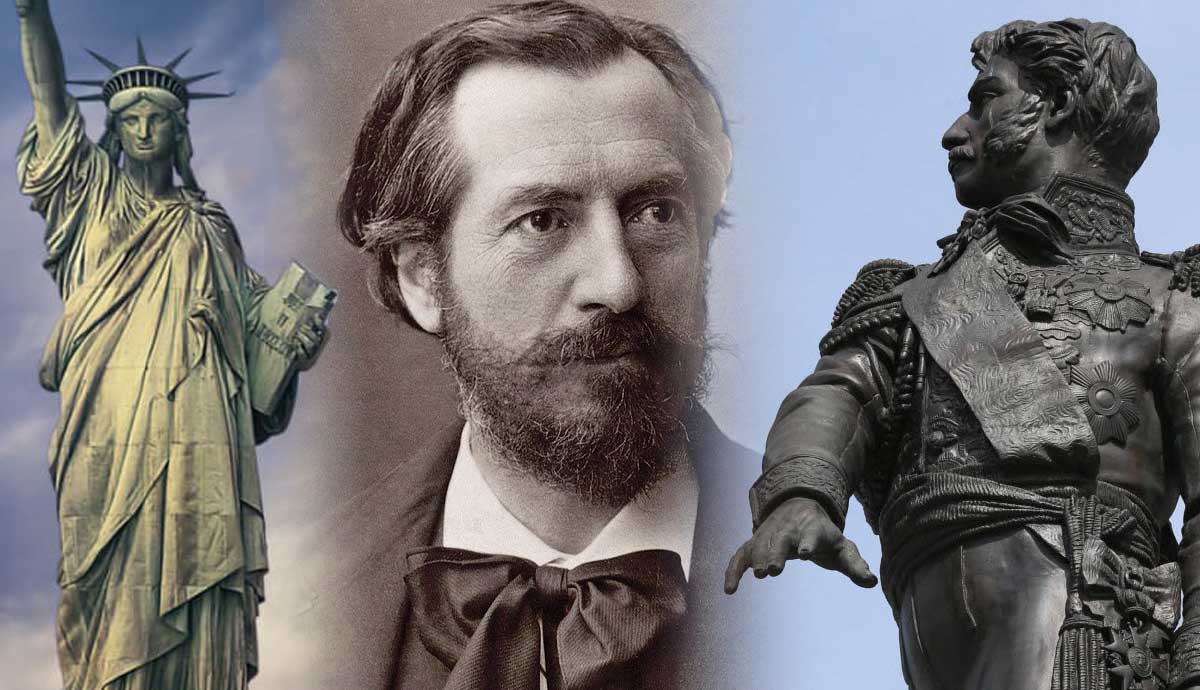
Frédéric Auguste Bartholdi was a world-renowned French sculptor during the late 19th and early 20th century. His greatest achievement was designing the Statue of Liberty, which was sent as a gift from France to the United States to commemorate the role the French played in the American Revolution. Bartholdi led a remarkable life, producing a series of colossal monuments throughout France, before setting his sights on the US. We delve into a series of facts about the legendary figure who produced the world’s most famous symbol of liberty and freedom for all.
Frédéric Auguste Bartholdi Grew Up in France

Bartholdi was born in the French city of Colmar in 1834 to a wealthy, prosperous family. Following the death of Bartholdi’s father, the family moved to Paris two years later, to 30 Rue Merchants, a site which has now been transformed into the Bartholdi Museum. From the age of 9, Bartholdi took art classes at the Lycee Louis-le-Grand. He studied architecture, drawing, painting and sculpture in Paris alongside some of the city’s most prominent artists and designers, giving him a series of core skills that would set him up for life.
He Received His First Major Commission at the Age of 20

Bartholdi received his first major art commission in 1854, to create a sculptural commemorative monument dedicated to the Napoleonic General Jean Rapp. The final masterpiece was unveiled during the 1855 Paris Exposition Universelle, where it was given a temporary home on the Champs Elysses. Just a year later, the statue was moved to its permanent site in the artist’s home city of Colmar. Tragically the statue was destroyed by Nazis in 1940, but after undergoing significant restoration work it was fully repaired, and now sits in Bartholdi’s birthplace, a fitting memorial to his hometown.
Bartholdi Made a Life Changing Trip to Egypt in 1855

In 1855 Bartholdi travelled to Egypt with the painter Jean-Leon Gerome, before heading out to Yemen and Ethiopia on his own. Like many creative thinkers of his generation, he was fascinated by the Orient, and its unfamiliar artistic heritage. During this life-changing trip, Bartholdi made copious sketches and studies of the large-scale colossi statues he encountered, and they came to inform much of his art for the remainder of his career. It was following this trip that Bartholdi first conceived the idea of creating a colossal statue of an Egyptian woman carrying a torch for the entrance to the Suez Canal. Sadly, the statue never came to fruition, but, perhaps more importantly, his designs became the launchpad for Bartholdi’s Statue of Liberty in the United States.
He Produced a Series of Monuments Throughout France

Before designing the Statue of Liberty, Bartholdi also produced numerous important public monuments including a statue of General Arrighi de Casanova for Corte in 1868, a statue of Diderot in Langres in 1884, and the Lion of Belfort, in 1880. He also created a series of private commissions, which included bas-relief monuments for temples featuring Biblical subjects.
The Statue of Liberty, 1886, Was His Crowning Glory

Without a doubt, the Statue of Liberty was the definitive pinnacle of Bartholdi’s career as a sculptor, etching him a permanent place in history. Bartholdi first came up with the idea for a statue that would celebrate American Independence in 1871. Bartholdi enlisted the help of French engineer Gustave Eiffel in constructing a 33-metre-tall statue of Lady Liberty. They completed the armature in Paris, showcasing the head of the statue at the Paris Exposition Universelle in 1878, before arranging for the entire statue to be shipped to the US, where it was installed on Liberty Island.










